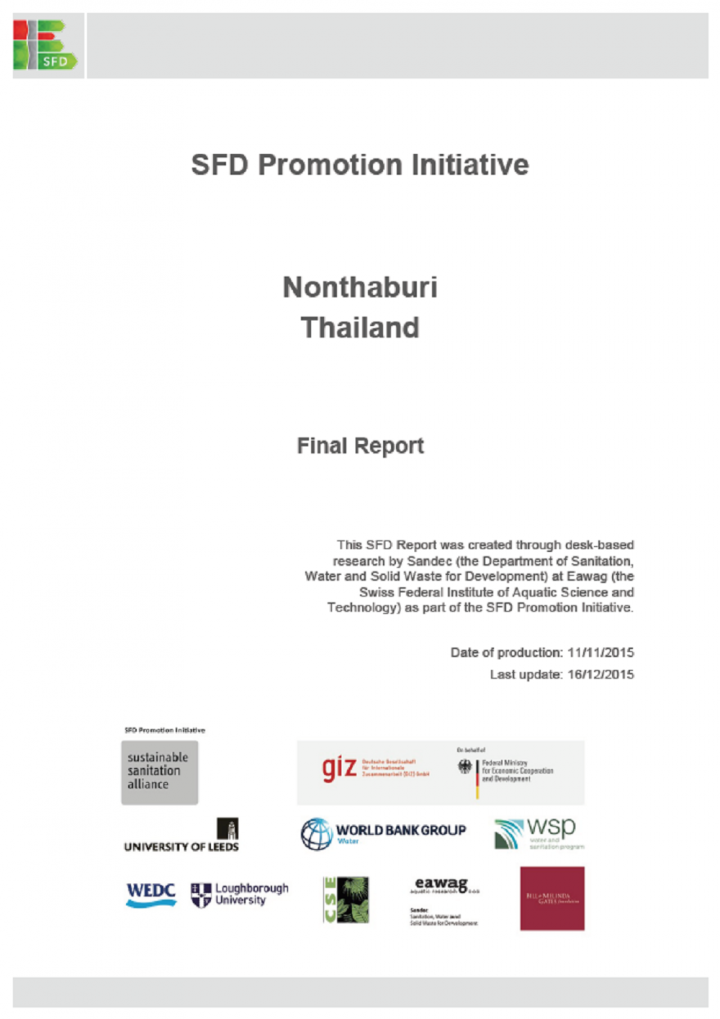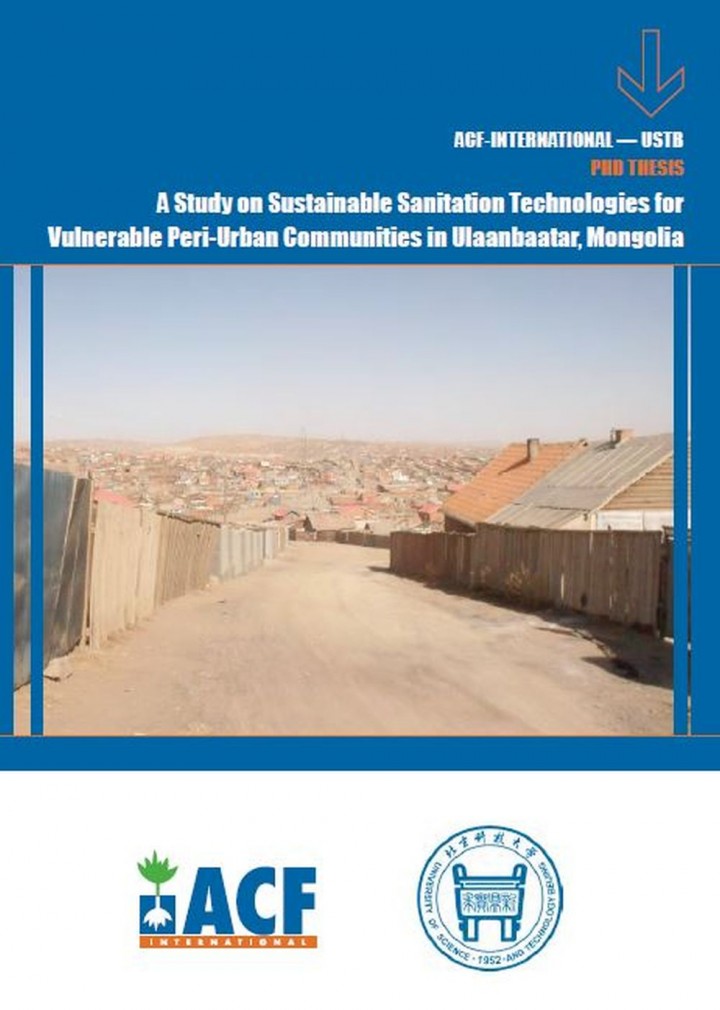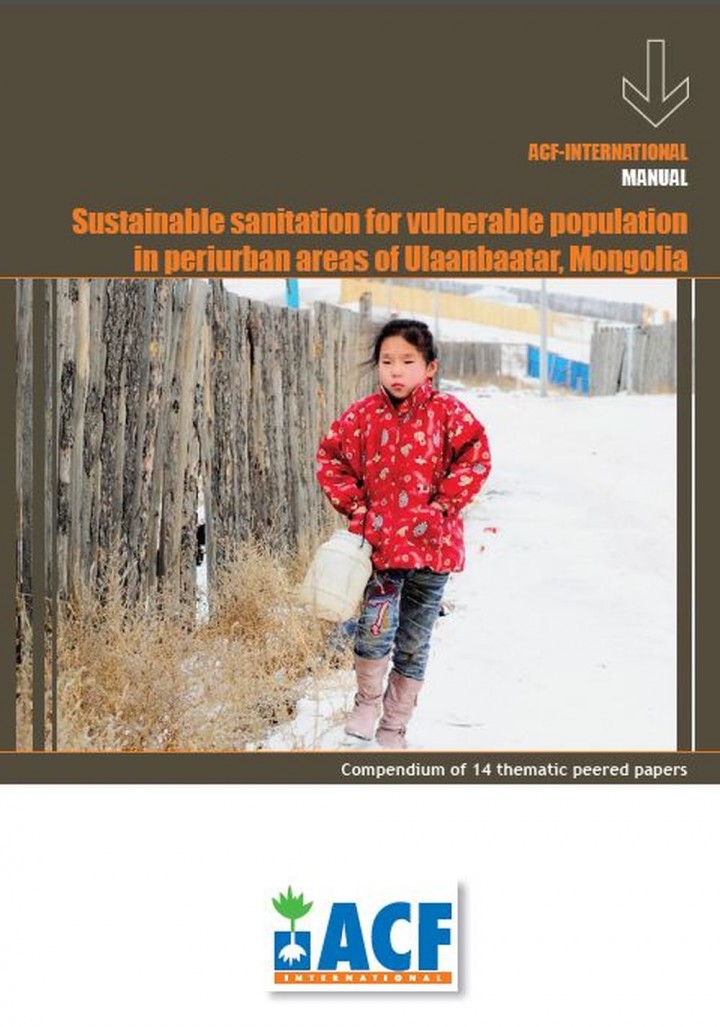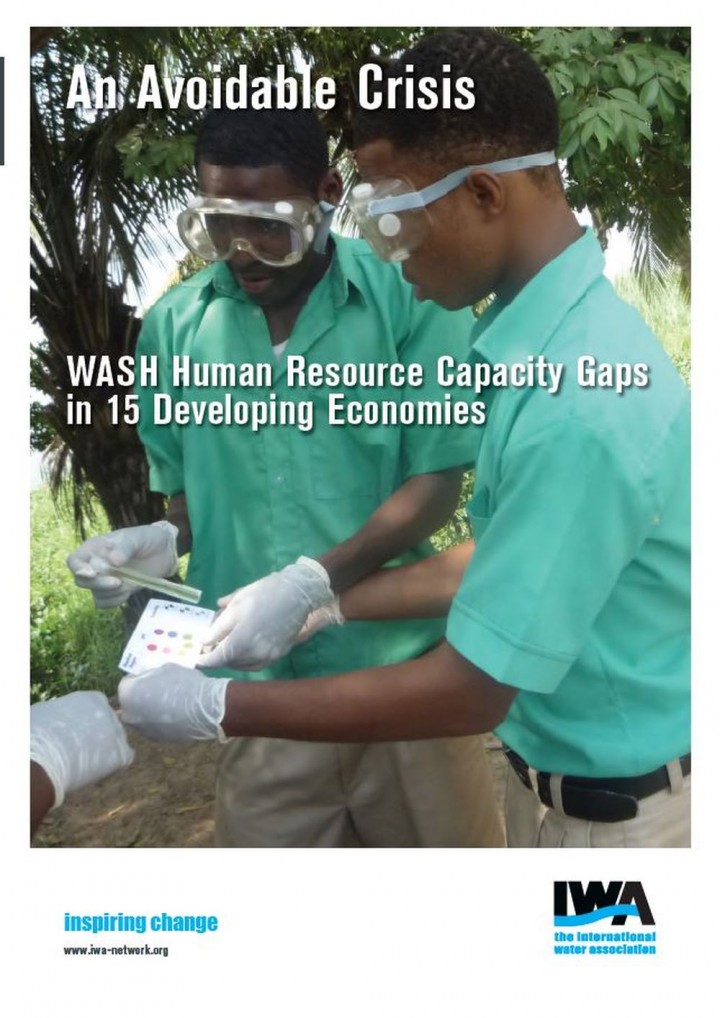Searching for information on Sanitation Workers?
The Sanitation Workers Knowledge + Learning Hub is the best source for all current news, trends, articles and updates on sanitation workers rights around the world.
Danang is located at the South Central Coast of Vietnam. It is the fourth most populated city in the country with approximately 1,007,400 inhabitants in 2014 (GSO 2015). The total land area of the city is 1,285 km2, including 65 km2 of residential area (GSO 2015). Sixty-two percent (62%) of the excreta flow was classified as unsafe management along the sanitation service chain (containment, …
Nonthaburi City Municipality is the principal city of Nonthaburi province, located to the north of Bangkok. It has a registered population of 256,457 in the area of 38.9 km2 (NCM 2015a). Most of the houses have onsite sanitation systems such as septic tanks or cesspools. The city municipality is responsible for the collection, transportation and treatment of the generated faecal sludge according …
Khulna is located in the south-western part of Bangladesh, with a population of 1.5 million and a total area of 46 km2. Its National policy and strategy documents encourage both NGOs and the private sector to actively engage in providing sanitation services. However, the SFD assessment has shown that 100% of the excreta in Khulna is not contained and therefore unsafely managed.
The Shit Flow …
In many of the world’s undeveloped or partially-developed countries, and even in some developed ones, frequent outbreaks of various water, sanitation and hygiene (WASH)- and greywater-borne diseases are still prevalent due to lack/absence/failure of WASH system. As a result, poor sanitation accounts for the death of a child every 20 seconds which leads to 1.5 million preventable death each …
Action contre la Faim (ACF) has been working in Mongolia since 2001; both in Ulaanbaatar Ger areas (urban formal and informal slums), and the western Bayan Ulgi (province), undertaking multiyear food security, WASH and nutrition programmes.
Both water and sanitation sub sectors are a growing concern: the current method for excreta disposal is using basic, often poorly constructed unsealed pit …
Nakuru is the fourth largest town in Kenya, lying within the Rift Valley and covering an area of 290 km2. Less than 30% of the population is served by the sewerage network, while the majority of the population use onsite sanitation services, predominantly in the form of basic or traditional pit latrines. Formal emptying services for fecal sludge has limited coverage, with the fecal sludge removed …
Composting is defined as the controlled biological decomposition and stabilization of organic substrates under a set of factors (e.g., temperature, moisture content, carbon-nitrogen ratio, degree of aeration, pH level, and physical structure of the raw materials), which allow development of thermophilic conditions as a result of biologically produced heat. The final product should be stable, free …
The Water Supply and Sanitation Collaborative Council Community of Practice on Sanitation and Hygiene in Developing Countries (WSSCC CoP) and the global Sustainable Sanitation Alliance (SuSanA) came together in late September 2015 to hold a joint three-week thematic discussion on sanitation and hygiene behaviour change programming and sustainability. It was the first time the two networks had …
With 165 million children suffering from chronic undernutrition (being stunted) and 52 million suffering from acute malnutrition (being wasted) (UNICEF et al., 2012), more concerted and cross-sectoral Action is needed. Improving water, sanitation and hygiene (WASH) in the context of nutrition programming offers one important opportunity to do this. A recent systematic review of 14 studies on WASH …
The dominant nutrition discourse concerns access to adequate food and its quality. It now includes food security, food rights and justice, governance and agriculture. Despite many initiatives to assure food access, and growing economies, high levels of undernutrition persist in much of Asia. It is increasingly suggested that much of this ‘Asian enigma’ can now be explained by open defecation …
This factsheet is the first in a series by Gereration Nutrition looking at different ways of preventing child undernutrition, and focuses on Water, Sanitation and Hygiene (WASH). It explains how WASH and Nutrition outcome for children are intimately linked and how improved WASH reduces undernutrition, thereby helping to break the cycle of poverty and transform people's lives.
A French version …
Shortages of human resources in the Water, Sanitation and Hygiene (WASH) sector will undermine the progress of many countries over the last two decades to increase access to water and sanitation. It will impede socio-economic
development of those countries that remain off-track to meet the MDG water and sanitation targets, and raises questions about how realistic WASH targets under the …
The achievement of the Millennium Development Goals and other international and national development targets hinges on capacities of individuals, organizations and societies to transform, in order to reach their development objectives. While financial resources, including official development assistance, are vital, they are not enough to promote sustainable human development. Without supportive …
The symposium responded to needs of action as identified during 2015’s World Water Forum 7 in South-Korea and 2015’s World Water Week in Stockholm. By linking actual experiences from implementation with innovative concepts of urban development, the symposium aimed
▶▶ to generate an input to the realization of respective SDGs and to the HABITAT III process (Quito/Ecuador, October 2016) …
Handwashing with soap is a highly effective method for reducing the risk of diarrheal disease, yet interventions to alter this behavior often fail or achieve only short-term success. In this paper, we propose that the “science of habit” can partly explain the challenge of handwashing behavior change. Integrating basic science insights from psychology, cognitive science, and behavior change …
How to finance sanitation systems was and still is a major challenge. Issue 24 of Sustainable Sanitation Practice (SSP) on „Financing sanitation“ shows three successful examples how sanitation can be financed. The papers presented in this issue are:
• David Auerbach describes the Sanergy Way for sanitation provision in urban slums in Nairobi, Kenya,
• Rochelle Holm et al. present a …
This handbook presents a summary of the expertise that engineers of International Committee of the Red Cross (ICRC) have acquired regarding environmental engineering in places of detention. Detailed drawings present solutions in such areas as water supply, sewage and waste disposal, food preparation, vector control, general hygiene and health.
The guidelines complement the ICRC handbook by …
This publication includes a set of guiding principles that will support companies in their efforts to implement water, sanitation and hygiene (WASH) at the workplace. Companies are invited to commit to these principles by signing the WBCSD Pledge for Access to Safe Water, Sanitation and Hygiene at the Workplace. This Pledge aims to secure appropriate access to safe WASH for all employees in all …
There is sufficient evidence that water, sanitation, and hygiene (WASH) may impact maternal and newborn health (MNH) to warrant greater attention from all stakeholders involved in improving MNH and achieving universal WASH access.
Enabling stronger integration between the WASH and health sectors has the potential to accelerate progress on MNH; this should be accompanied by improving monitoring …
This report presents for the first time a multi-country review of water, sanitation and hygiene (WASH) services in health care facilities in 54 low- and middle-income countries. WASH services provide for water availability and quality, presence of sanitation facilities and availability of soap and water for handwashing. The main focus of the results is on water availability as there were very …
Inadequate drinking water, sanitation, and hygiene (WaSH) in non-household settings, such as schools, health care facilities, and workplaces impacts the health, education, welfare, and productivity of populations, particularly in low and middle-income countries. There is limited knowledge on the status of WaSH in such settings. To address this gap, we reviewed international standards, …
The city of Nashik is located in the northwest of the state of Maharashtra in the Western Ghats at the source of the Godavari River. As per Census 2011 Nashik has a total population of just under 1.5 Million. In Nashik it was estimated that 85% of excreta is managed safely while 15% of the excreta ends up directly in the environment without adequate treatment.
This Shit Flow Diagram (SFD) …
The provision of quality schools, textbooks, and teachers can result in effective education only if a child is in school and ready and able to learn. The child is at the center of efforts to achieve Education for All (EFA) by 2015 and to address the Millennium Development Goals (MDGs) of universal basic education and gender equality in educational access. A child who is hungry or sick will not be …
The National Urban Sanitation Policy (NUSP), launched in 2008 by Ministry of Urban Development (MoUD), Government of India; is based on the 74th Constitutional Amendment Act (1992), aims to strengthen Urban Local Bodies (ULBs). The overall goal of the policy is to transform urban India into sanitised, healthy and liveable cities and towns. Particular focus is given to improvement of hygienic …
Documento que desarolla una metodología de análisis de las capacidades para la sostenibilidad de servicios de agua y saneamiento en entidades prestadoras de servicios de agua y saneamiento en el país, mediante, lineamientos que ayuden a orientar las necesidades organizacionales para enfrentar el reto de incorporación de este tipo en su cartera.
I. ANTECEDENTES
II. OBJETIVO
III. ENFOQUE …








































